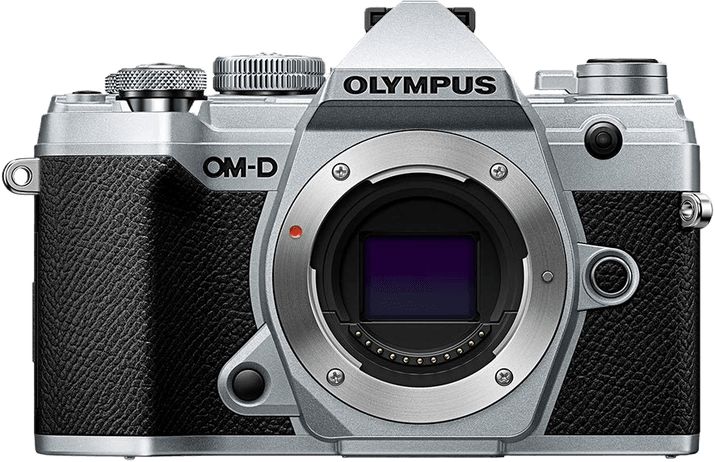Olympus OM-D E-M5 Specs and Scores

The Olympus OM-D E-M5 scores a 55/100 in our evaluation. Announced on February 8, 2012, this mirrorless camera entered the market with a launch price of $999. Measuring 122 x 89 x 43mm and weighing 425g (0.94lbs), it is a compact and lightweight option.
Considering its 2012 release, the E-M5’s specifications are not as competitive in today’s market. However, it remains a decent choice for those seeking a user-friendly, travel-friendly camera.
Olympus OM-D E-M5 Overview and Optics
The Olympus OM-D E-M5 receives a score of 54/100 for its optics. This camera possesses 16.1 megapixels, a shooting speed of 9, and a CMOS sensor. It uses a TruePic VI processor and has a DXOMARK score of 71 for the sensor. The sensor size is Micro Four Thirds, and the lens mount is Micro 4/3. The camera also features image stabilization and a 4:3 aspect ratio.
In the current market, the Olympus OM-D E-M5 has a decent set of specifications. However, it faces strong competition from cameras with larger sensors and more advanced processors. The 16.1 megapixels and TruePic VI processor provide good image quality, but they may not satisfy users seeking the highest resolution and fastest processing.
The Olympus OM-D E-M5 has solid optics, but it may not be the top choice for those prioritizing cutting-edge technology. Its score of 54/100 reflects its position as a respectable camera, but not an industry leader.
Olympus OM-D E-M5 Video Performance
The Olympus OM-D E-M5 receives a video score of 43/100. Its maximum video resolution is Full HD, with dimensions of 1920 x 1080. The camera’s maximum video frame rate is 30fps. Unfortunately, the OM-D E-M5 does not have built-in time-lapse functionality.
Compared to other cameras in today’s market, the OM-D E-M5’s video capabilities are not very impressive. Many modern cameras offer 4K video resolution and higher frame rates, which result in better video quality and smoother footage. The lack of built-in time-lapse functionality also limits the camera’s versatility for video enthusiasts.
Despite its relatively low video score, the Olympus OM-D E-M5 may still be suitable for casual users who prioritize photography over videography. However, those seeking advanced video features should consider other options.
Olympus OM-D E-M5 Features and Benefits
The Olympus OM-D E-M5 earns a feature score of 65/100. This camera comes with a 3-inch touchscreen display, offering a screen resolution of 610,000 dots. The flip screen feature provides flexibility for various shooting angles. However, it lacks GPS, WIFI, and Bluetooth capabilities, which are essential for easy sharing and geotagging of photos in today’s digital age.
Comparing the E-M5 to other cameras in the market, the absence of connectivity features makes it less competitive. Many modern cameras offer seamless integration with smartphones and other devices for instant sharing and remote control. Despite these shortcomings, the Olympus OM-D E-M5 remains a reliable choice for those who prioritize image quality and performance over connectivity options.
Olympus OM-D E-M5 Storage and Battery
The Olympus OM-D E-M5 receives a storage and battery score of 21/100. This camera has one memory card slot, accepting SD, SDHC, and SDXC cards. In today’s market, having only one slot might be limiting for some photographers, as many cameras now offer dual slots for extra storage and backup.
The battery life of the E-M5 is 310 shots, powered by a BLN-1 battery. This battery life is relatively short compared to other cameras in its class, which may require more frequent battery changes for extended shooting sessions. Additionally, the E-M5 lacks USB charging capabilities, which could be inconvenient for on-the-go photographers who rely on portable power sources.
Taking these factors into account, the Olympus OM-D E-M5’s storage and battery capabilities may not be ideal for photographers seeking ample storage and longer battery life.
